Identify the System Constraint
Component Constraint
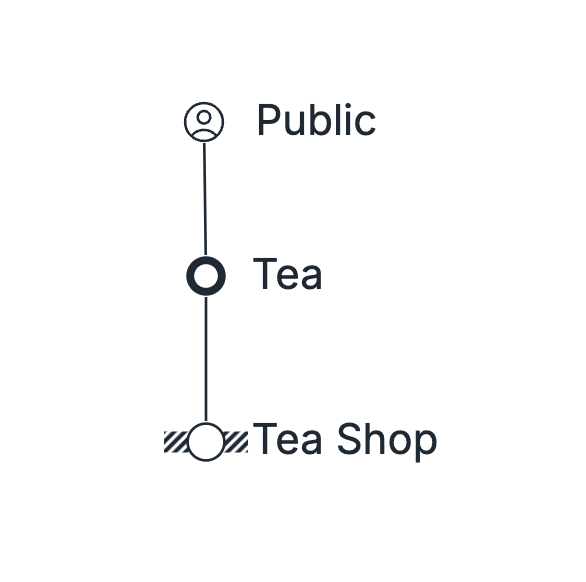
In the realm of Value Chain and Wardley Mapping
With the Constraint being the Component, we are in the realm of Value Chain and Wardley Mapping.
The key thing to keep in mind is that we identified our Constraint to be the Component, so we will only add detail there. We will not add detail to User or the User Need. Remember, by definition of our Constraint, those are fine.
At this point, though unlikely, it may be sufficient to declare that the Component is the constraint and invest in our offering. If Constraint is sufficiently clear and actionable, proceed to step two. However, if the Constraint is not clear and actionable yet, then this is where we add additional detail.
Identify steps
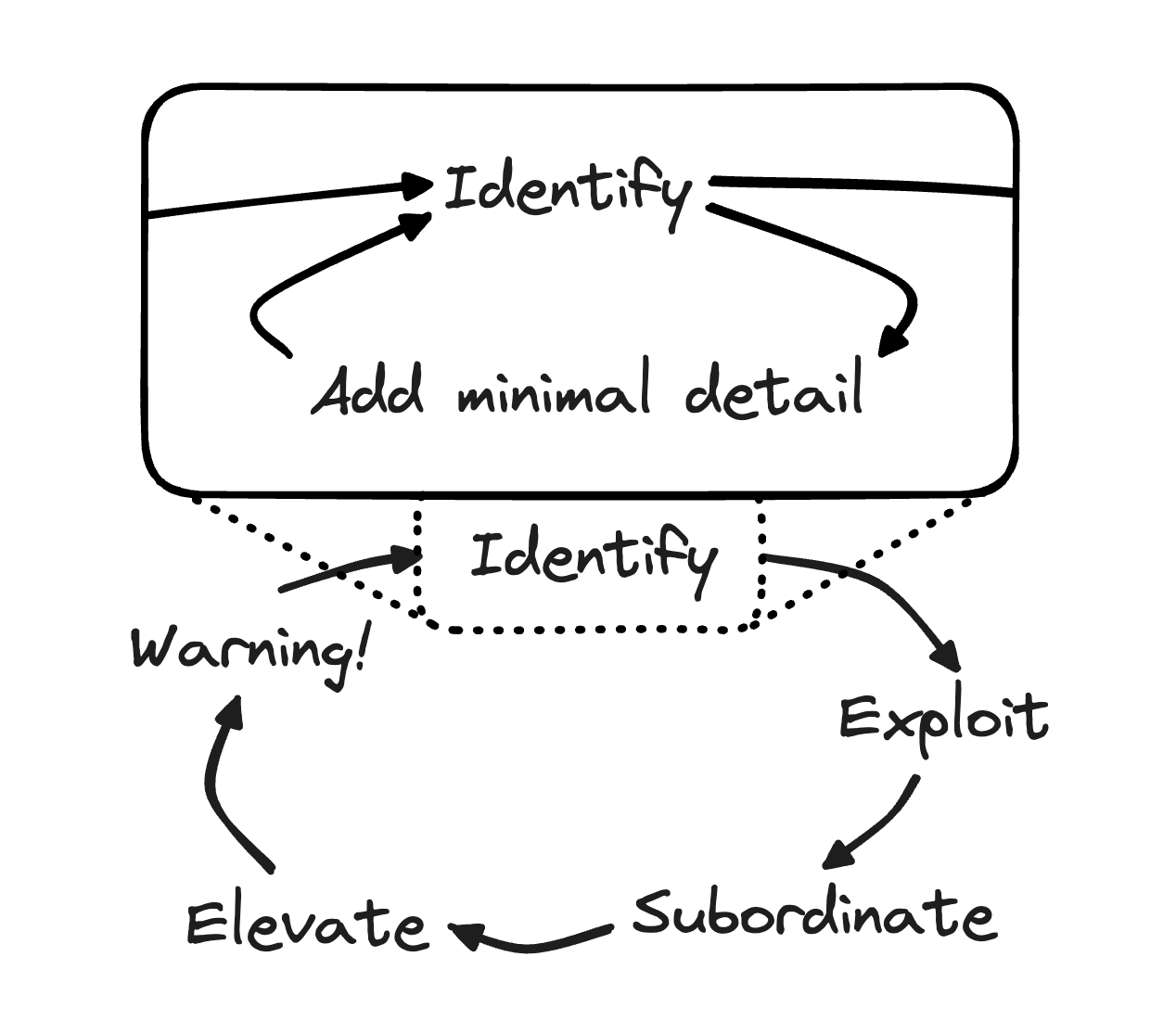
- For the currently marked Constraint, add minimal detail.
- Identify the new, more detailed Constraint.
Repeat these two steps until you feel that the Constraint is detailed enough to take specific action on.
Once you, with your system, reach the point where Constraint is detailed enough to be actionable, you are ready to proceed to Decide How to Exploit the System's Constraint lesson.
Let's illustrate some of the different things that can happen during this step using our Tea Shop example.
Tea Shop example
One note before we start with the example
While the steps are intended to be straightforward, please do not think that you will be able to proceed through the steps as fast as you read about them in this example. Each step took some time to think through, consider some alternatives, and view the system through different lenses and models. Reading the outcome of this process will likely be much faster than how long it takes to actually execute this process.
Let's begin with our current Constraint.

Perform Identify Step 1 - For the currently marked Constraint, add minimal detail.
Focusing on the Constraint, we know that in our Tea Shop we have Staff serving Tea, so let's add that detail.

Now, it may seem somewhat odd to have Staff next to Tea Shop. After all, aren't the Staff part of the Tea Shop? What we are doing here is having multiple levels of detail at the same time. So, yes, the Staff are part of the Tea Shop, but since we want to focus on that detail we "zoom in" and show the Staff and [the rest of the] Tea Shop side by side. Another way to think about this is to imagine that the Tea Shop is a "bucket" with all the stuff that makes up a Tea Shop inside the "bucket". We reach into the "bucket" and pull out Staff and place it next to the Tea Shop "bucket".
The reason we leave [the rest of the] Tea Shop on the Value Chain like this is as a placeholder to remind us that there is a lot more going on with the rest of the Tea Shop, but we are not exploring all of that detail yet.
We would still read this part of the Value Chain as Tea depends on Staff AND Tea Shop.
Perform Identify Step 2 - Identify the new, more detailed Constraint.
We notice that we have enough Staff and that our lines are not at the register but waiting around for completed Tea. So, the Constraint is not the Staff. We mark the Constraint at the remainder of the Tea Shop.

We now ask, is this Constraint detailed enough to be actionable?
No, we added detail but we still have the overall Tea Shop as the Constraint. Let's investigate further. We repeat the steps.
Perform Identify Step 1 - For the currently marked Constraint, add minimal detail.
We observe in the Tea Shop that Staff are waiting for the Hot Cup of Tea to serve to the customers. We add that detail.
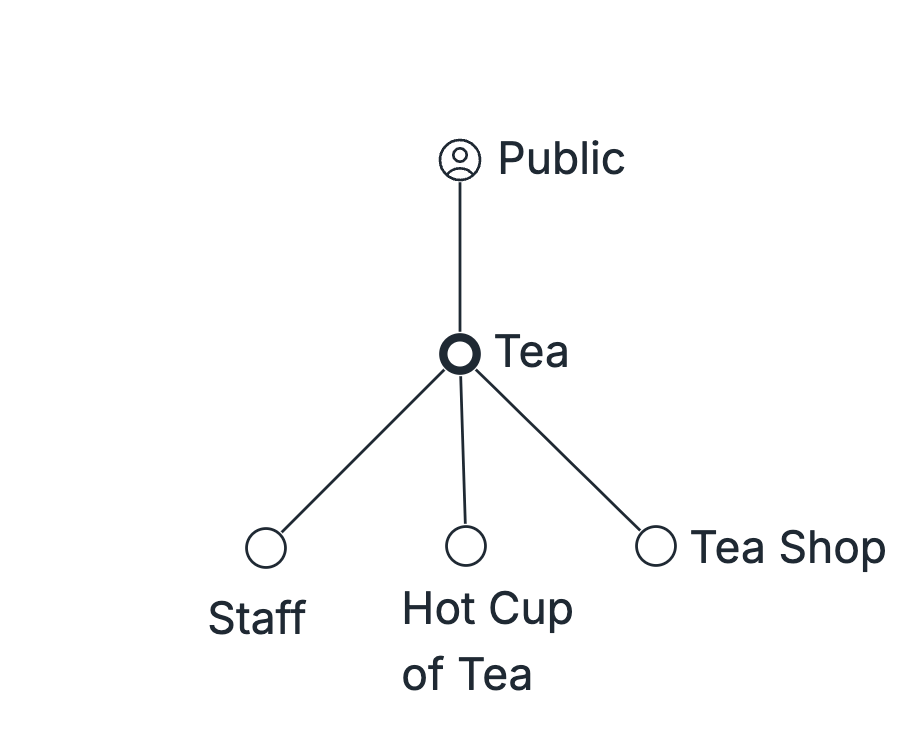
Note once again that if we think of Tea Shop as a "bucket" with all the stuff that makes up a Tea Shop inside the "bucket", we reached into it and pulled out Hot Cup of Tea and placed it next to the Tea Shop "bucket". Alternatively, we "zoomed in" to highlight the Hot Cup of Tea detail while still having [the rest of the] Tea Shop "zoomed out".
We still read this part of the Value Chain as Tea depends on Staff AND Hot Cup of Tea AND Tea Shop.
Perform Identify Step 2 - Identify the new, more detailed Constraint.
With this additional level of detail, we can now pinpoint our Constraint at the Hot Cup of Tea, leaving all other Tea Shop details unspecified.
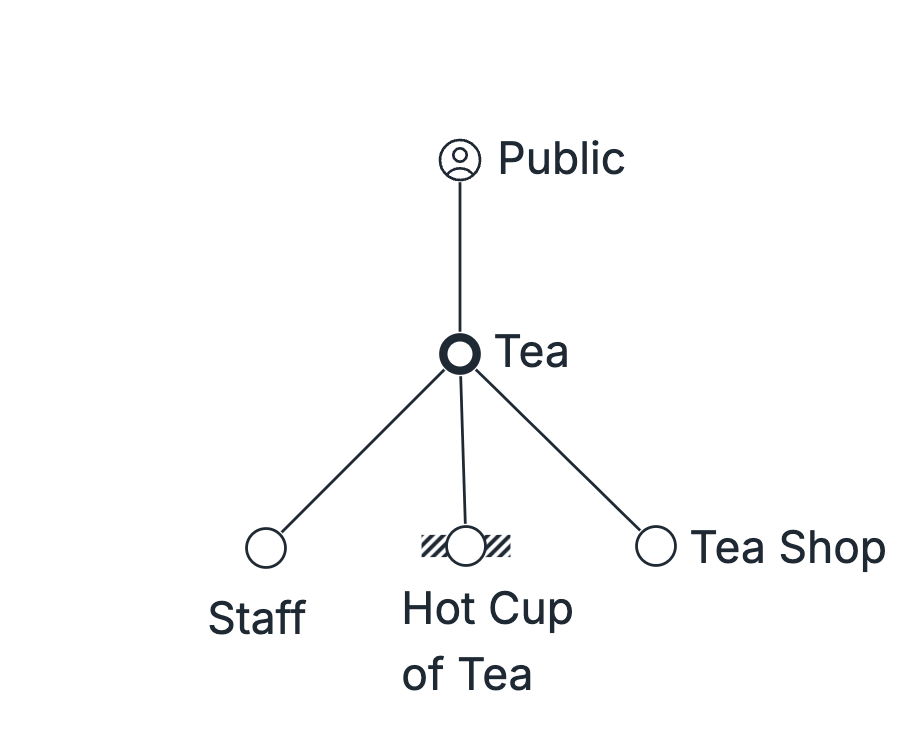
We ask again, is this Constraint detailed enough to be actionable?
In our case, let's pursue this further. We repeat the steps.
Perform Identify Step 1 - For the currently marked Constraint, add minimal detail.
A Hot Cup of Tea consists of a combination of Hot Water and a Cup with Tea Leaves. We add that detail.
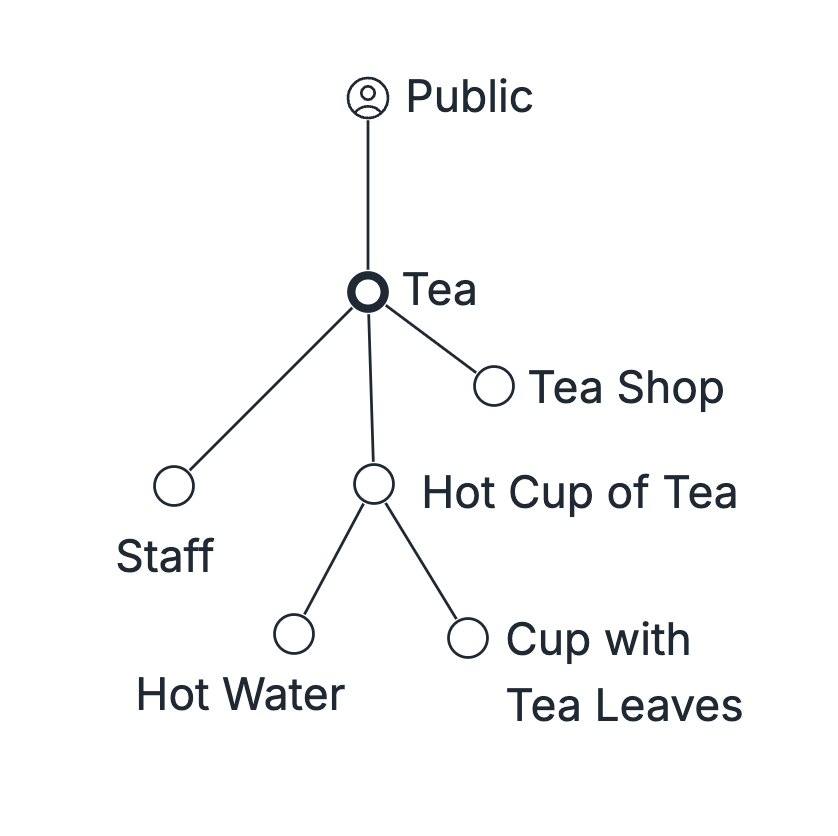
In this case, the detail we added is more straightforward (no need for the "bucket" metaphor from before), in that Hot Cup of Tea depends on Hot Water AND Cup with Tea Leaves.
Perform Identify Step 2 - Identify the new, more detailed Constraint.
Taking a look at our operation, we notice that we have ready Cups with Tea Leaves waiting for our Hot Water to be ready. As such, we mark the Hot Water as the Constraint.
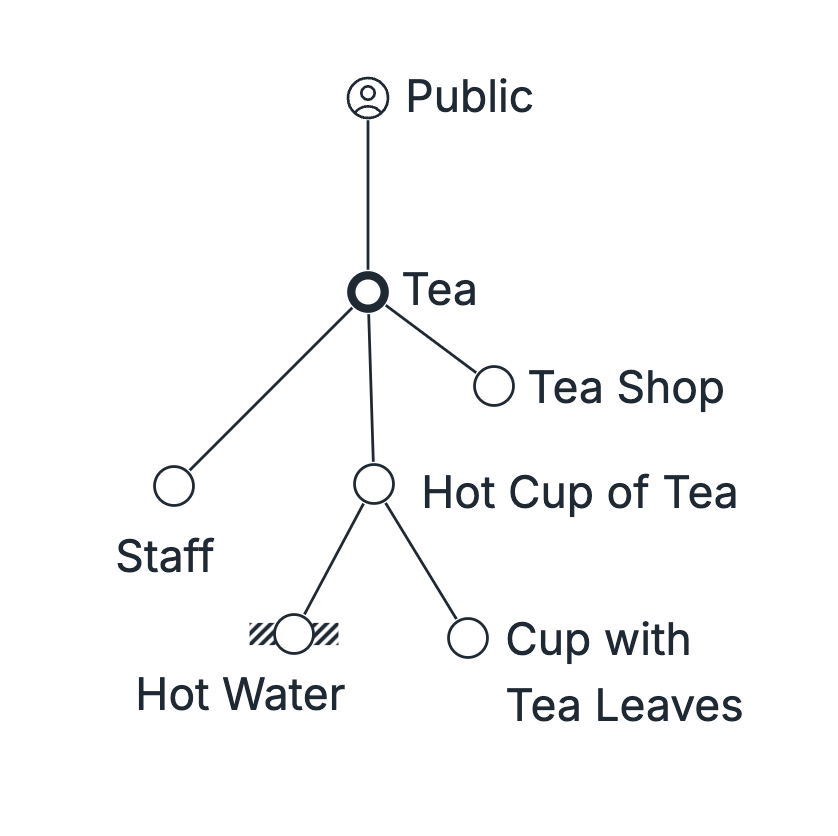
We ask again, is this Constraint detailed enough to be actionable?
Once again, let's get into more detail. We are curious about our Hot Water situation. We repeat the steps.
Perform Identify Step 1 - For the currently marked Constraint, add minimal detail.
We observe that to create Hot Water, we combine Water with a Kettle and we boil the Water. We add that detail.
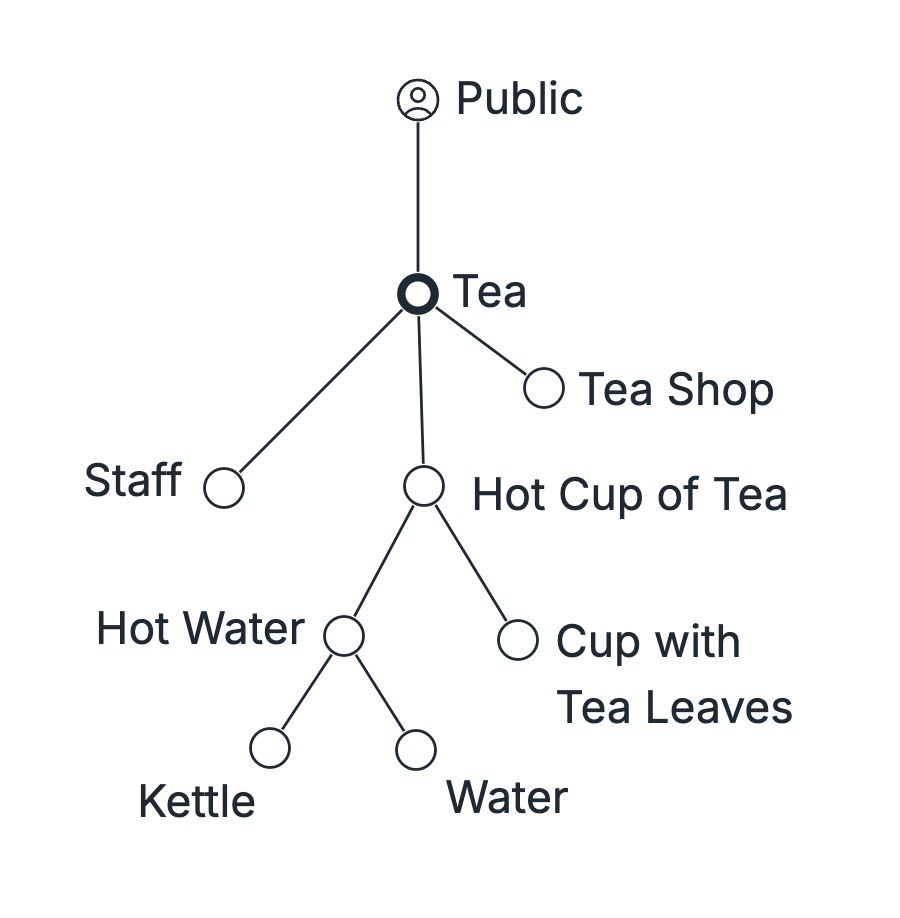
Perform Identify Step 2 - Identify the new, more detailed Constraint.
We notice that ultimately, what we are waiting for and what is the Constraint of our operation is the time it takes for our Kettle to boil the Water.

We ask again, is this Constraint detailed enough to be actionable?
In this case, we will say that now the Constraint is clear and actionable. We know where to take action and have some ideas of what to do with the Kettle component.
We have now completed Identify the System Constraint Step and will proceed to Decide How to Exploit the System Constraint next.
Once you, with your system, reach the point where Constraint is detailed enough to be actionable, you too are ready to proceed to Decide How to Exploit the System Constraint step.
Again, the steps are:
- For the currently marked Constraint, add minimal detail.
- Identify the new, more detailed Constraint.
Repeat these two steps until you feel that the Constraint is detailed enough to take specific action on.
Summary and reflection
Notice how the two-step procedure of adding detail at the Constraint allows you to clearly decide what becomes part of the Value Chain and what stays out. You do not have to model the entire Value Chain in detail in order to identify the Constraint. If you are worried that we are leaving out important details elsewhere, go back and review Improving a non-Constraint section in the Constraint lesson.
As the level of detail of the Value Chain increases, you are adding detail for your specific system and context. Follow on steps will generate actions specifically for your system. If you were analyzing a different system, the generated actions in follow on steps would be specific for that other system's context. The benefit of focusing on the Constraint is that you do not have to consider all possible actions, only the ones that are relevant to your system in its current context.
Lastly, because you are focusing on the Constraint, future actions you take will affect the one place in your Value Chain with the most leverage to impact your entire Value Chain. Your improvements at the Constraint will immediately improve the whole.
Up next
Now that you completed this step, you should proceed to Decide How to Exploit the System's Constraint lesson next.
If you are curious what identifying the Constraint is like for User or User Need, visit the User Constraint or User Need Constraint lessons.
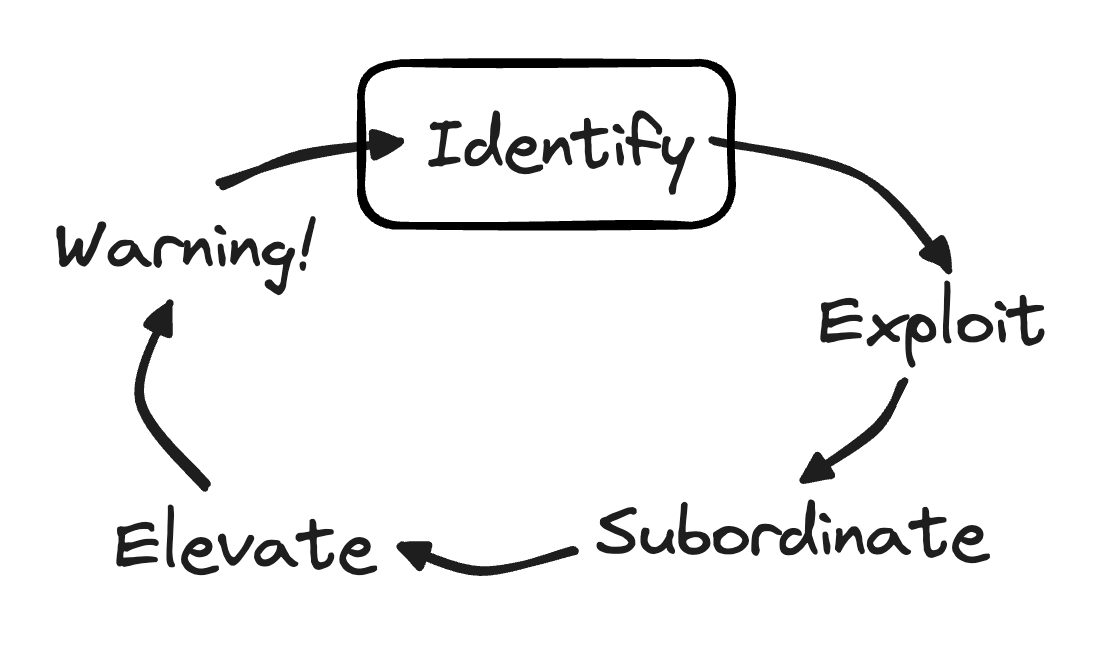
Go back
Identify the System Constraint
Learn how to identify and add detail to the system Constraint in your Value Chain. Follow a step-by-step process to pinpoint a clear and actionable Constraint, using the Tea Shop example as a reference.
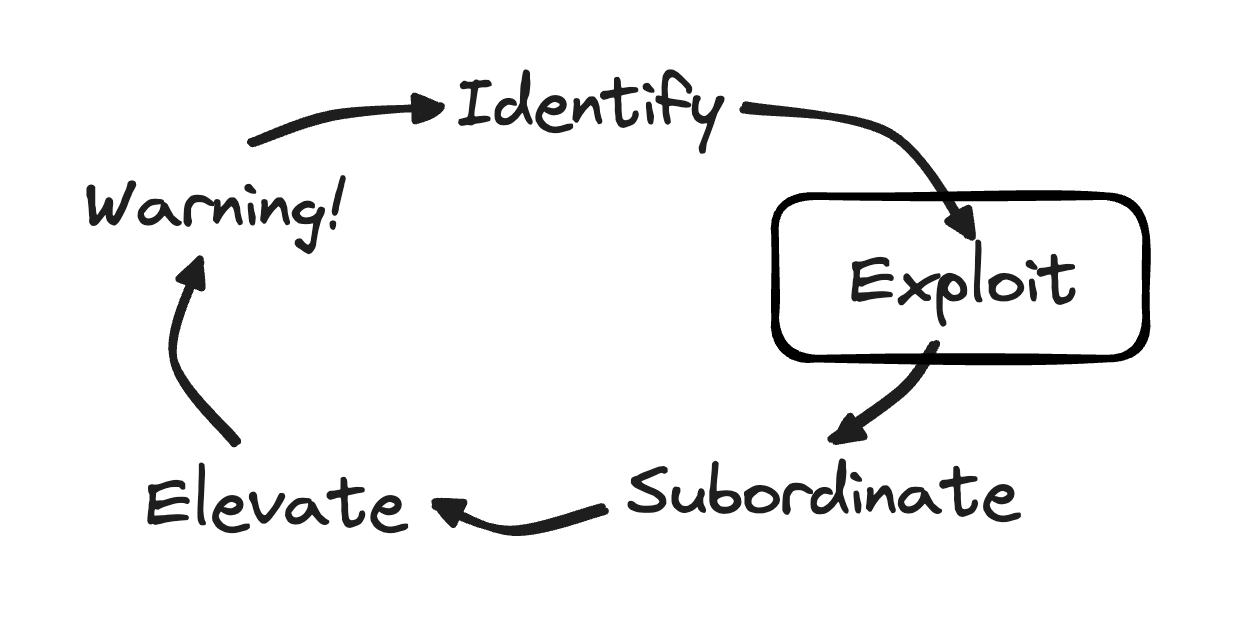
Up next
Decide How to Exploit the System's Constraint
Learn how to maximize the efficiency of your system's constraints and ensure no resources are wasted. Discover practical strategies to exploit your constraints and increase the overall value delivered by your system.
